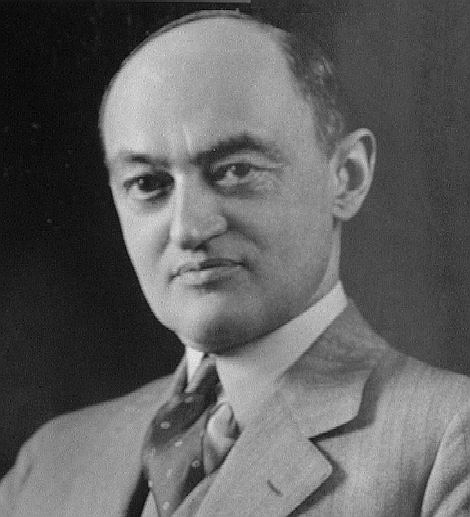At the turn of the century, a period of strengthening the role of monopolies, increasing property differentiation of the population and the deepening of cyclical crises appeared the concept of an Austrian economist and sociologist Joseph Schumpeter. Joseph Schumpeter was an economist and sociologist, he came into the history of economic science as a profound scholar of theoretical problems of entrepreneurship and evolution of socio-economic systems, as the historian of economic theory. His broad vision of the evolution of socio-economic processes still has influence on modern economic thought. He presented his understanding of the subject of economics and tried to combine economic theory, economic sociology and the history of economic analysis. He tried to create a coherent system of believes that explains new phenomena and processes. According to his theoretical views, J. Schumpeter does not belong to any known economic schools. He was involved in many issues, focusing on theContinue reading
Economics Concepts
Cashless Economy – The Road Towards a Cashless World
A cashless economy is a system where payments are made by electronic means rather than using cash or check to pay for goods or services. In an economy that is “cashless”, a person would pay with plastic methods like credit cards, debit cards, or smart cards. This type of transaction electronically moves money from one account to another rather than using the traditional forms of exchanging printed currency or checks. Woodfords Model of Cashless Economy There has been much debate over Woodford’s model of a cashless economy by many experts in the field of economics. Most experts believe that although some of the ideas brought forth make sense, the model is still incomplete because, in real-world economics, central banks can affect nominal interest rates. In Woodford’s model, he assumes that this does not relate to the real-world economy. Woodford’s argument is that banks have committed themselves to straightforward objectives toContinue reading
Benefits of Cost Volume Profit Analysis
Every organization needs to calculate future revenues in order to help the managers carry out their operations effectively. Cost volume is the approach used for this purpose. Cost Volume Profit analysis or CVP analysis helps in identifying the operating activity levels with a purpose to avoid any kind of losses and achieve profits. Moreover, it also helps the companies to plan their future operations and see whether their organizational performance is going on the right track or not. While conducting a business, the companies also have to face various risks and in order to counter those risks, CVP analysis is an effective tool. Cost volume profit analysis can also help the organizations in calculating the breakeven point which is the point at which the profits become equal to zero. This can be done by finding the break even volume and then using it to make graphical representations. The break evenContinue reading
Importance of Capital Controls in Economic Policy
Globalization of capital investment and finance has surfaced for a long period of time in the world of global financial market. Capital flow liberalization has brought up the importance of capital controls for some countries to achieve their economic growth. The Description of Capital Controls Since the failure of Bretton Woods system in 1971, the international capital movements within developed and developing countries become unstable and for some countries the capital flows need to be controlled. Capital controls are restrictions to regulate the movement of capitals which are flowing in or out of the country. Capital flows may be in forms of bank loans, portfolio investment and foreign direct investment. The controls of short terms portfolio investment and bank loans are quite necessary since they are quite risky because of the roll-over risks. For long term credits and FDI are less risky if they are politically guaranteed. Looking back toContinue reading
Inflation: Meaning, Causes, and Effects
Inflation can be characterized as a rise in the general value level and therefore there is a fall in the estimation of cash. Inflation happens when the measure of purchasing power is higher than the yield of merchandise and ventures. Inflation additionally happens when the measure of cash surpasses the measure of enterprises accessible. Regarding whether the falling the estimation of cash will influence the elements of cash relies upon the level of the fall. Fundamentally, alludes to an expansion in the supply of money or credit with respect to the accessibility of stock and venture, bringing about higher costs. In this manner, expansion can be estimated as far as rates. The rate increment in the value list, as a rate for every penny per unit of time, or, in other words, years. The two fundamental cost lists are utilized when estimating inflation, the Producer Price Index(PPI) and the ConsumerContinue reading
Objectives of Fiscal Policy
By fiscal policy we mean, the government’s tax efforts, public expenditure and public borrowing. Through these the government can effectively encourage consumption, investment and savings habits and also restrict them. For example, suppose there is inflation in a country. Inflation implies that the people have high purchasing power and so they demand goods. To curb this, the government may raise the personal tax and also the corporate tax. Similarly, by altering its expenditure on various public projects, the government would be able to influence the prevailing economic condition. Public borrowing involves government issuing bonds and encouraging common public and other institutions to buy them. By this, the government would be able to bring down the level of purchasing power in the economy and control the inflation. The following are the objectives of fiscal policy: Maximization of the aggregate saving is the first objective. Tins are achieved by encouraging peopleContinue reading


